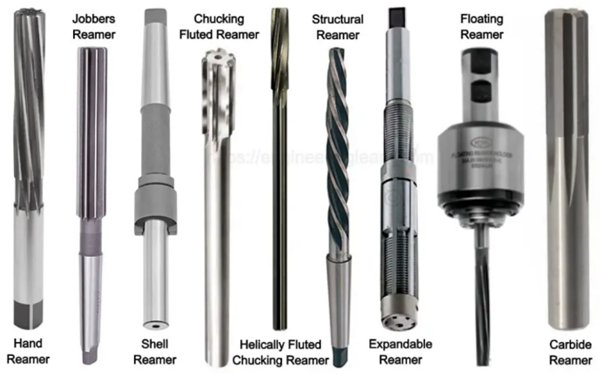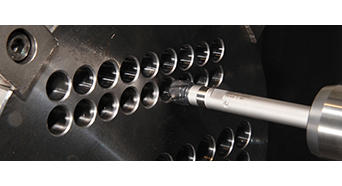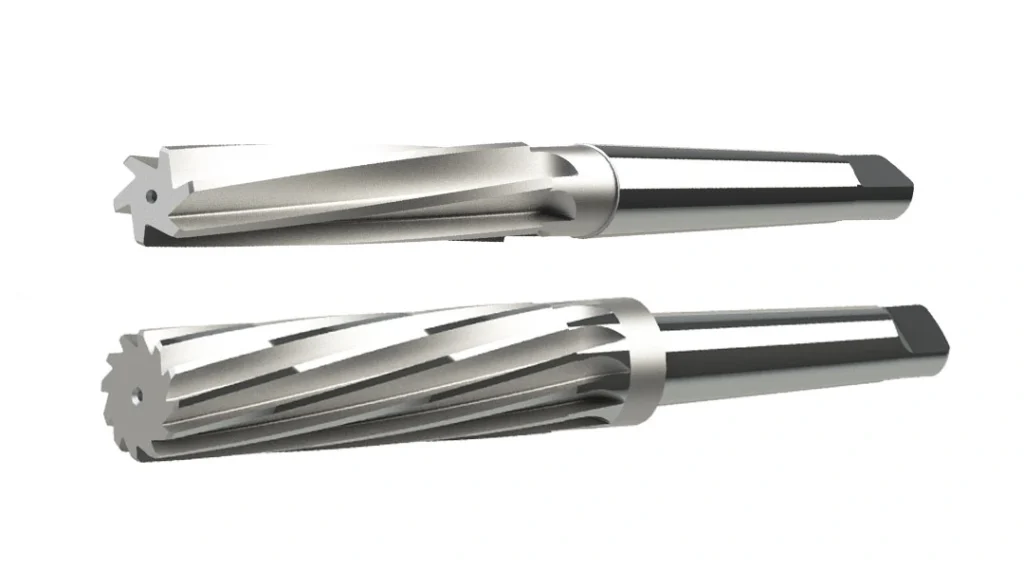Have you ever needed a hole that’s just the right size and perfectly smooth? That’s exactly where a reamer tool comes in.
Whether you’re working on a DIY project or tackling professional metalwork, knowing what a reamer tool is and how it works can save you time and frustration. You’ll discover how this simple yet powerful tool can make your work more precise and efficient.
Keep reading to learn why a reamer tool might be the missing piece in your toolbox.

Credit: www.britannica.com
Reamer Tool Basics
Understanding the basics of a reamer tool is essential for anyone working with metal or wood. Reamers help create smooth, precise holes by enlarging existing ones. These tools improve the fit and finish of drilled holes in many projects.
Knowing how reamers work and what types exist can save time and improve results. The materials used in reamers also affect their performance and durability. Let’s explore the fundamentals of reamer tools.
What Is A Reamer
A reamer is a cutting tool used to make holes larger and more accurate. It removes small amounts of material from the inside of a hole. The goal is to create a smooth, round hole with a precise diameter. Reamers follow a drilled hole to improve its size and finish.
Types Of Reamers
There are several types of reamers for different tasks. Hand reamers are used manually for small jobs. Machine reamers work with drills or lathes for faster results. There are also adjustable reamers that can change size slightly. Each type fits specific hole sizes and materials.
Materials Used In Reamers
Reamers are made from strong materials to cut metal and other hard surfaces. High-speed steel (HSS) is common and works well for many metals. Carbide reamers are harder and last longer but cost more. Some reamers have coatings to reduce wear and increase life.

Credit: waykenrm.com
How Reamers Work
Understanding how reamers work helps in choosing the right tool for precision tasks. Reamers create smooth, accurate holes by removing small amounts of material. They improve hole size and finish beyond what drills or boring tools provide.
Cutting Mechanism
Reamers cut using multiple sharp edges along their length. These edges shave off thin layers from the hole’s inner surface. The tool rotates, and each cutting edge removes a little material. This action produces a clean, precise hole with a smooth finish.
Design Features
Reamers have straight or spiral flutes that guide chips away. Their body is slightly larger than the original hole. This size difference ensures they remove a small amount of material evenly. The tool’s rigid design keeps it stable during use. Some reamers allow slight flexibility for minor adjustments.
Differences From Drills And Boring Tools
Drills create holes by removing large amounts quickly. Reamers focus on fine-tuning hole size and surface finish. Boring tools enlarge holes but with less precision than reamers. Reamers provide tighter tolerances and smoother finishes than both. Each tool serves a distinct purpose in hole making.
Applications Of Reamers
Reamers are tools designed to finish holes with high accuracy. They smooth and enlarge holes after drilling. Many industries use reamers for precise work. Their applications vary from manufacturing to engineering tasks. Below are some common uses of reamers in different fields.
Precision Drilling In Manufacturing
Manufacturers use reamers to create exact hole sizes. These holes fit parts together perfectly. Reamers help maintain tight tolerances in metal and plastic parts. They ensure products meet quality standards. This precision reduces waste and improves product performance.
Automotive And Aerospace Uses
In automotive and aerospace, reamers shape parts with strict accuracy. Engine cylinders and turbine components often need reamed holes. This process helps parts move smoothly and last longer. Safety and reliability depend on these precise holes. Reamers play a key role in meeting these demands.
Metalworking And Engineering
Metalworkers use reamers to refine drilled holes in metal sheets and blocks. Engineers rely on reamers for assembly and repair work. The tool improves hole finish and size for bolts and pins. It also prevents damage caused by rough holes. Reamers make metal parts fit and work better.

Credit: www.kennametal.com
Choosing The Right Reamer
Choosing the right reamer is key for smooth and accurate hole finishing. The right tool improves the quality of your work. It also saves time and materials. Several factors help in making the best choice. These include the material, size, tolerance, and type of reamer.
Selecting Based On Material
Different materials need different reamers. Hard metals like steel require tough, durable reamers. Softer metals such as aluminum need less aggressive tools. For plastics or wood, special reamers prevent cracking or tearing. Always check the material type before picking a reamer. This ensures the tool lasts longer and works better.
Size And Tolerance Considerations
Reamers come in many sizes. Choose a size that matches your hole diameter closely. The tolerance level tells how precise the hole will be. Tight tolerance reamers produce very exact holes. Loose tolerance ones allow small variations. Match your project’s needs with the right size and tolerance. This reduces errors and improves fit.
Hand Vs Machine Reamers
Hand reamers are simple and easy to control. They suit small jobs and repairs. Machine reamers work with power tools and CNC machines. They are faster and more consistent. Choose hand reamers for delicate or low-volume work. Pick machine reamers for high-volume or precise tasks. The right type depends on your tools and job scale.
Operating Reamer Tools
Operating reamer tools requires careful attention to detail. These tools make holes smooth and accurate. Proper use ensures better results and longer tool life. Understanding setup, speed, and lubrication is key to success.
Setup And Alignment
Start by securing the workpiece firmly. The reamer must align perfectly with the hole. Misalignment causes poor finishes and tool damage. Use guides or fixtures to keep the tool straight. Check alignment before turning on the machine.
Speed And Feed Rates
Choose the right speed based on the material. Too fast can wear the tool quickly. Too slow may cause rough surfaces. Feed rate must match the reamer size and material hardness. Follow manufacturer guidelines for best performance.
Lubrication And Cooling
Use cutting fluid to reduce heat and friction. Proper lubrication extends tool life and improves finish. Apply coolant steadily during operation. Avoid dry cutting unless the tool is designed for it. Cooling prevents damage to both tool and workpiece.
Maintaining Reamer Tools
Maintaining reamer tools keeps them sharp and efficient. Proper care extends their life and saves money. Regular checks and cleaning prevent damage and poor performance.
Sharpening Techniques
Sharpen reamers with a fine grinding wheel. Use light pressure to avoid overheating. Keep the original angle of the cutting edges. Check the sharpness often to ensure smooth cuts.
Storage Tips
Store reamers in a dry place to stop rust. Use protective covers to keep edges safe. Avoid mixing reamers with other tools to prevent damage. Organize them in a box or rack for easy access.
Common Wear Issues
Look for dull edges that cause rough holes. Check for chips or cracks on the cutting surfaces. Watch for uneven wear that affects accuracy. Replace or repair worn reamers to keep quality work.
Troubleshooting Reaming Problems
Troubleshooting reaming problems is essential for good results. Reaming is a precise process. Small errors can cause defects. Identifying and fixing issues saves time and materials. It also improves product quality.
Surface Finish Defects
Rough or uneven surfaces often mean the tool is dull. Dirt or chips can also damage the finish. Using too much speed or feed causes poor surface quality. Check the tool sharpness and clean the work area. Adjust cutting speed to a lower setting for smoother results.
Hole Size Inaccuracies
Holes too large or too small show incorrect tool use. Wrong tool size or worn reamers affect accuracy. Machine vibration or poor alignment can change hole size. Measure tools before use and secure the workpiece tightly. Maintain steady feed rates to keep hole dimensions correct.
Tool Breakage Causes
Tool breakage happens due to excessive force or bad handling. Using a reamer on very hard material can cause breaks. Poor lubrication increases friction and heat, weakening the tool. Avoid sudden stops or starts during reaming. Use proper coolant and handle tools with care to extend life.
Frequently Asked Questions
What Is The Primary Use Of A Reamer Tool?
A reamer tool is used to enlarge and smooth existing holes. It provides precise hole sizing and a smooth finish. Reamers improve hole accuracy and surface quality in metalworking and machining tasks.
How Does A Reamer Differ From A Drill Bit?
A reamer refines and enlarges holes, while a drill bit creates holes. Reamers ensure precise diameter and smoothness. Drill bits remove material to form initial holes, but reamers improve final hole quality.
What Materials Can A Reamer Tool Work On?
Reamers can work on metals, plastics, and wood. They are commonly used on steel, aluminum, brass, and other metals. Material choice depends on the reamer type and the machining application.
What Types Of Reamers Are Commonly Used?
Common reamers include hand reamers, machine reamers, and expansion reamers. Each type suits different precision and application needs. Hand reamers are manual, while machine reamers attach to power tools.
Conclusion
A reamer tool helps make holes smooth and exact. It removes small bits of material for a better fit. Many industries use it to improve their work. Knowing how a reamer works can help in many projects. It is a simple tool but very useful.
Understanding its purpose makes choosing the right tool easier. Keep this tool in mind for precise hole finishing.


